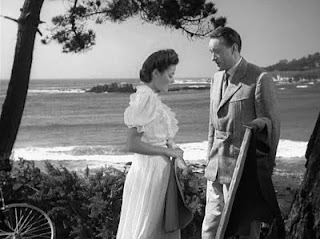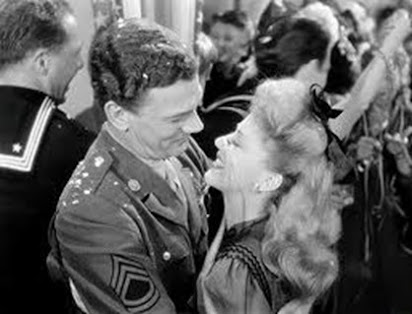 Watchingwell
Watchingwell
Curated classic films
Discoveries
and
Rediscoveries
There's no denying that I watch movies over and over again, even mediocre movies. There is something I find comforting about watching a world that existed in the past and in the imagination of the filmmakers. But, occasionally, after seeing hundreds and hundreds of films, I run across one that I haven't seen, and not a "B" picture, but one with major stars. I've collected a few of them and I think they're worth viewing.
Being a film person, I’d heard of silent star, Theda Bara – seen pictures, and thanks to TCM, heard about her touching friendship with actor, Gilbert Roland. Although a bit skeptical about her in talkies, I watched the recently aired Call Her Savage from 1932, where her great screen appeal is exhibited. This pre-code, sometimes raunchy, rags to riches to rags adventure is made convincing by the vitality of Bara’s performance. Her wild-child character exhibits a good-natured resilience for whatever life throws her way. It is easy to see why she was such a big deal in her short career. Directed by John Francis Dillon, it costars Gilbert Roland and Thelma Todd. If you ever have the opportunity, definitely see it.
Claudette Colbert stars in a recent discovery, Midnight,
from 1939 (How could they have made so many good films in one year?) with
costars, Don Ameche, John Barrymore, and Mary Astor. Ameche, a Parisian taxi driver, runs across
Colbert, dressed in a smashing evening gown, somehow broke and soaking wet from
the pouring rain. Naturally, he
‘befriends’ her, but she turns out to be quite capable of taking care of
herself. An affluent John Barrymore ‘befriends’ her as well, but, as it turns
out, just to make his wife, Mary Astor, jealous, but everyone involved gets
very confused about it. This makes for
good comedy. Directed with his usual panache by Mitchell Leisen with a very
funny script by Billy Wilder and Charles Brackett.
While we’re on the subject of Claudette Colbert, this
discovery is even more surprising. A film with Gary Cooper and Claudette
Colbert! How could I have missed it? The film is called Bluebeard’s
Eighth Wife from 1938, and is directed by Ernst Lubitsch, well-known
for his comic touch and written by Billy Wilder and Charles Brackett, also with great
comedy credentials. The story involves what we would call today a prenuptial
agreement that playboy Cooper requires each time he marries. Although a generous one, potential bride,
Colbert, rejects the idea and thinks he makes marriage too business-like. She presents her own plan, which Cooper
accepts and they marry and then the arrangements start to get under Cooper’s
skin. Well, that’s the comedy part, in the screwball category. David Niven and
Edward Everett Horton costar.
Believe it or not, I recently discovered another Claudette
Colbert film, this one with James Stewart called It’s a Wonderful World
from 1939. Directed by W.S. Van Dyke and
written by Ben Hecht and Herman J. Mankiewicz, this film should be better
known. It has a few problems, but it is fast-paced and the script has some
funny supporting characters played by Nat Pendleton and Edgar Kennedy. The problems are that
James Stewart plays an unusually hard-boiled guy and Colbert plays a poet and
the plot really strains to get them together. Not to mention that the title has
nothing to do with the plot which is about escaped prisoner, Stewart,
kidnapping Colbert, in the course of trying to prove his innocence, and captive,
Colbert, deciding to help him.
This film is not a recent discovery, but I saw it for the
first time only a couple of years ago, which is surprising because by then I thought
I had seen all the MGM productions of the 1940s, especially one that has five
of its major stars. The film, When Ladies Meet from 1941 stars
Joan Crawford, an author in love with her married publisher, played by Herbert
Marshall, although she has a faithful boyfriend who pursues her with offers of
marriage. He’s played by young and
handsome Robert Taylor. (Okay, some suspension of disbelief is needed here.) They all
gather at a wonderfully designed country house of friend, Spring Byington, and
guess who shows up? Herbert Marshall’s
wife, played by Greer Garson, who looks great and sounds great and steals the
picture. Well directed by Robert Z. Leonard, this is a very entertaining film.
While we’re on the subject of Robert Taylor, an older, but
still handsome, version of the actor, plays a rather unsympathetic character in
the 1946 Undercurrent. I consider this a discovery because I
can’t recall seeing it all the way through, even though I must have seen parts.
Taylor plays a rich industrialist who is negotiating to buy a process developed
by scientist, Edmund Gwenn. While visiting, Taylor is smitten by Gwenn’s daughter,
Ann, played by Katherine Hepburn, and he proposes marriage. Having accepted that at her age, she would
remain unmarried, she is swept off her feet by Taylor’s attention. She accepts
his proposal, in spite of knowing very little about him. This proves to be a
mistake, as it turns out he is obsessively mysterious about his (maybe) dead
brother, Michael. This frightens her but she is determined to investigate
anyway. Robert Mitchum, in a significant
role with very little screen time, plays Michael. Jayne Meadows makes an
impressive debut, and Vincente Minnelli, in a departure of sorts, directs a
dark and suspenseful story.
Katherine Hepburn, again, is in a similar role in Keeper
of the Flame from 1942. In fact, I must have confused the two films,
which is why it is also a discovery, having recently watched them both. Hepburn
plays the widow of a successful businessman turned politician who was killed in
an automobile accident before he won office. A reporter, played by Spencer
Tracy, is doing a story on the man everyone considers a great hero. The two
come into conflict when Tracy starts uncovering some unpleasant truths about
the great man. All the associates and family members contrive to keep Tracy’s
reporter character from getting too close to anything that would diminish his
memory. The slow exposure of the great
man’s attraction to fascism was a powerful story in 1942, soon after America’s
entry into the war. Forrest Tucker and Richard Whorf costar, along with
Margaret Wycherley as the dead man’s elderly, slightly demented mother. Directed by George Cukor.
Speaking of widows in mysterious households and dark dramas,
I recently discovered Cry Wolf from 1947, where Barbara Stanwyck
is the widow seeking the truth about her in-laws. It is easy to come across a Barbara Stanwyck
film that one hasn’t seen before because she made so many films, it’s not hard
to have missed one or two. Her antagonist is her dead husband’s uncle, Erroll
Flynn, in a very serious, almost sinister role.
Like the new wife in Undercurrent, Stanwyck is determined
to investigate the mystery surrounding her husband’s death, even when Flynn’s
character seems menacing. The difference here is that the Stanwyck character is
a tough cookie and doesn’t let anyone push her around. Her daring attempts to
uncover the truth make a suspenseful film which keeps your interest until the resolution
at the very end. Costarring Richard
Basehart and Geraldine Brooks and directed by Peter Godfrey.
In 1946, Errol Flynn made another “un-swashbuckling” film
that I recently discovered. Never Say Goodbye, costarring a
lovely Eleanor Parker as his ex-wife, concerns their eight-year-old daughter,
Flip, who lives six months with her mother and six months with her father, and
is not happy with the situation. She
tries to get her parents back together by promoting a rival, a marine on leave,
played by Forrest Tucker. Flynn had a
real talent for comedy, but obviously was more drawn to the swashbuckling genre.
Although the script is kind of silly, it is completely watchable, even
charming, thanks to the fine supporting cast of Patti Brady as Phillippa
(Flip), Lucille Watson as the inevitable mother-in-law, and Hattie McDaniel as
the nanny who helps Flip write to the marine, and send her mother’s picture along
to guarantee comedy confusion. Marvelous costume design by Leah Rhodes gives
the film an expensive look. Directed by James V. Kern.
A film from 1947 that I recently saw for the first time is
rather unusual for the time that it devotes to composing music. Night Song starring Dana
Andrews and Merle Oberon, with Hoagy Carmichael and Ethel Barrymore, sounds like
a soap opera on paper, but the actors are up to the task of selling the
story. Andrews is a blind composer,
Oberon is a wealthy socialite who wants to help, but Andrews is not receptive,
to say the least. So she decides to pretend she is blind to get close to him. What
could go wrong? She enlists the help of Carmichael, the roommate and best
friend of Andrews (who, by the way, gets the best lines) and Andrews gets to
finish his concerto. Then he gets it introduced at Carnegie Hall under the
baton of Eugene Ormandy and guess who plays it? Artur Rubenstein! Lucky,
huh? Okay, but the film actually lets
you listen to it for a long time before they start talking again. Imagine that happening today. It’s an odd
film, but it’s enjoyable. Directed by John Cromwell.























































